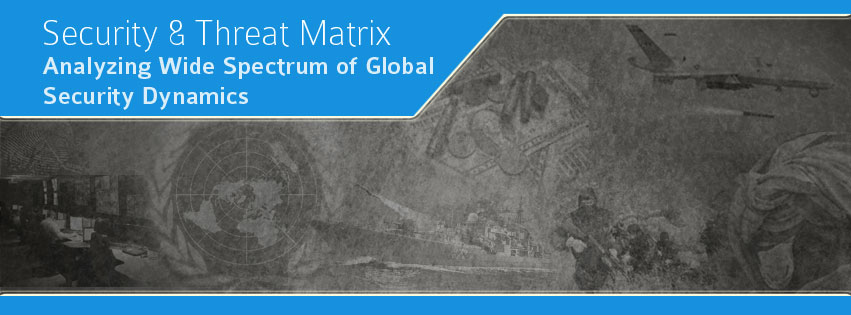Shahzad Masood Roomi
Maritime developments in Eastern Europe and Baltic states carry all the signs of beginning of a new Cold War in 21st century which would usher a new era of arms race in the region. As the NATO and the US are supplying weapons to the Eastern European and Baltic States' naval forces, Russian response has also been a swift one in mitigating the threat and keeping the balance of power in its favor.
Poland is looking for anti-ship cruise missiles (ideally US Harpoon) for its submarines while new submarines are also on order. US would gladly supply Poland with these missiles and new submarines as it will serve US interests in the region and would also help to extend the political control by establishing Poland defenses as close NATO ally under a constant Russian threat. US diplomacy in the close proximity of Russia revolves around a containment policy.
Russian response is a more aggressive posturing in the region. New Russian maritime projects indicate a renewal of Russian Navy's 4 battle commands with 4 carrier groups. A detailed look on these projects makes it obvious that Russia is not ready to accept the expansion of NATO to its borders. From Russian perspective, the execution of this modernization drive has both political and military dynamics. This Russian modernization is a strong signal to Western Europe and Washington about how Moscow feels about NATO expansion in its backyard but more importantly, it is also an indication that Russia is going to play a more assertive role in future geopolitics of the region and beyond. Russian intervention in Syria to save Asad’s regime there is the indistinct manifestation of this.
Once Russia complete the modernization of its naval forces with multipurpose heavy aircraft carriers, it will certainly begin to play a more assertive role in Arctic Circle, Atlantic Ocean and, many be troubled Pacific Rim of Indian Ocean. Below are the details of Russian Super Carrier program and future destroyer program.
Russian Super Carrier Program:
Project 23000E or Shtorm is the name of a new multipurpose heavy aircraft carrier design for Russian naval forces. The project is going to be executed by Krylovsky State Research Center (KRSC).
The design features a split air wing comprising navalized T-50 PAK/FA and Mig-29Ks, as well as jet powered naval AEW platforms. The ship is going to house Ka-27 helicopters as well.
Valery Polyakov, the deputy director of KSC informed media about the design goals of this multipurpose carrier;
"The carrier is designed to conduct operations in remote and oceanic areas, engage land-based and sea-borne enemy targets, ensure the operational stability of naval forces, protect landing troops, and provide the anti-aircraft defense,"
The initial specifications show that the ship would be a competitor to USN Nimitz class with its displacement of 90-100,000 tons, and length of 330 meters. Ship will carry 80 - 90 aircraft of various sorts as per mission requirements. The ship would be 40 meters wide with a draft of 11 meters.
Its crusie speed will be 20kt while it will have a top speed of 30 kt. The endurance of carrier in the sea is intended at 4 month time. The biggest hurdle will be designing of non-conventional propulsion for such a heavy ship.
The project is an ambitious one as it is being designed with provision of dual design angled flight deck with four launch positions: 2 from Ski-Jump and 2 from electromagnetic catapults.
The main design feature which set it apart from conventional carrier design is inclusion of two island concept. It will separate the running of the ship from the flying operations resulting in greater visibility of flying operations and allowing other commander to focus more on maritime maneuvering in the sea.
Russian internet source claims that funds for the project has already been allocated.
Russian Future Destroyer:
Apart from this heavy duty carrier, a new class of destroyer for the Russian Navy is currently under development by the Krylov State Research Center (KSRC), IHS Jane's was told during a visit to the company.
The new destroyer design called Project 23560E or Shkval (Squall) is being pursued for Russian naval forces by Krylovsky State Research Center (KRSC). A scale model of the design was exhibited for the first time during the International Maritime Defence Show 2015 held earlier in St Petersburg.
By looking at its specifications it can easily be labeled as a Cruiser. At full-load its displacement will be between 15,000-18,000 tons. It has a length of 200 meters, beam of 23 meters. It can cruise at speed of 2o kt while its maximum speed is 32kt. It can operate for 90 days in the sea with a crew of 250-300 on board. Despite its massive displacement and size, it will still be powered by gas turbine engine.
Russian manufacturer has plans to install a battle management system integrated with tactical and operational-tactical ACSs on these destroyers which will provide commander a clear situational awareness during the maritime engagements. This battle management system will get data from multiple on-board sensors multi-functional phased array radar, electronic warfare subsystem, communications suite, underwater reconnaissance system. Each ship will be able to house two ship borne helicopters.
The destroyer carries huge amount of missiles in vertical launching arramgenets. These include 60-70 anti-ship or anti-land cruise missiles, 128 surface-to-air missiles (SAMs), and 16-24 anti-submarine missiles. The ship is also equipped with a 130 mm multipurpose naval gun.














